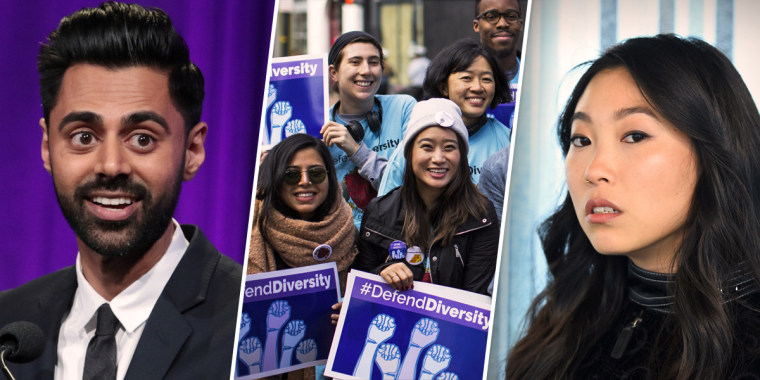Asian Americans underwent a profound coming of age over the last decade. The community became the fastest-growing racial or ethnic group in America, experiencing the pride, pain and progress that come with growth.
Once a group stereotyped as perpetually foreign and too small to have diverse political opinions, Asian Americans — thanks to rapid expansion, coupled with a rise in grassroots activism — paved the way for a renaissance in media representation and reached historic milestones for political engagement.
Gaining political influence
Historically a largely overlooked constituency, Asian Americans are increasingly courted by major political parties and individual campaigns. The Democratic and Republican parties have begun to take serious note of the group, drawn by several examples over the last decade of the electorate's ability to sway competitive elections, particularly at the state and local levels.
Over the last decade, an unprecedented number of Asian American candidates have also run for office. Consequently, political representation has grown exponentially: A decade ago, less than 1 percent of members of Congress were Asian American; today, that number has more than tripled.
At the national level, the trend includes several firsts. In 2015, Republican former Louisiana Gov. Bobby Jindal became the first Asian American to launch a nationwide campaign for president. Less than five years later, Sen. Kamala Harris of California, Rep. Tulsi Gabbard of Hawaii and the entrepreneur Andrew Yang became the first candidates with Asian American or Pacific Islander heritage to run national campaigns for president as Democrats.
Some argue that this political progress started with the Obama years. The rise of the Asian American grassroots progressive movement began before the 2010s but shaped much of the organizing during the decade, says Karthick Ramakrishnan, director of AAPI Data, which collects and publishes demographic data on the Asian American and Pacific Islander communities.
Ramakrishnan says Barack Obama's presidency was a watershed for Asian American progressive organizing, adding that outside the administration, Asian American progressives — building off a history of anti-war, pro-immigrant rights activism — lobbied the White House and elected officials to keep Obama's campaign promises on immigration rights and the end of mass deportations. They and other immigration rights groups helped to provide legal services for immigrants who continued to face deportation during the Obama administration.
The community also lobbied for comprehensive immigration reform bills, including the Deferred Action for Childhood Arrivals policy, which Obama signed and which would protect hundreds of thousands of young undocumented immigrants, many of whom are Asian American.
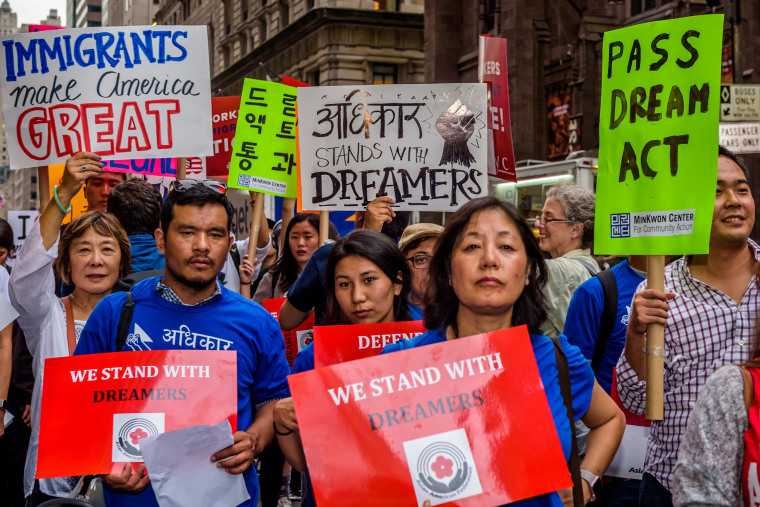
Kevin Xu, an Obama White House staffer who is co-host of the "Model Majority Podcast," which covers Asian American politics and current events, recalled how Obama appointed three Asian Americans to his Cabinet — former Washington Gov. Gary Locke as commerce secretary, Steven Chu as energy secretary and Eric Shinseki as veteran affairs secretary — and noted how each reflected different aspects of Asian American life.
During the Obama administration, the White House Initiative on Asian American and Pacific Islanders, or WHIAAPI, also worked closely with community leaders, launching initiatives on economic inequality, immigration reform, mental health and classroom bullying. In 2015, WHIAAPI spearheaded the first national summit on the Asian American and Pacific Islander communities, bringing together nearly 2,000 advocates, artists and community organizers.
"All of these moves galvanized Asian Americans into seeing political participation and public service as something we could legitimately do at scale," Xu said.
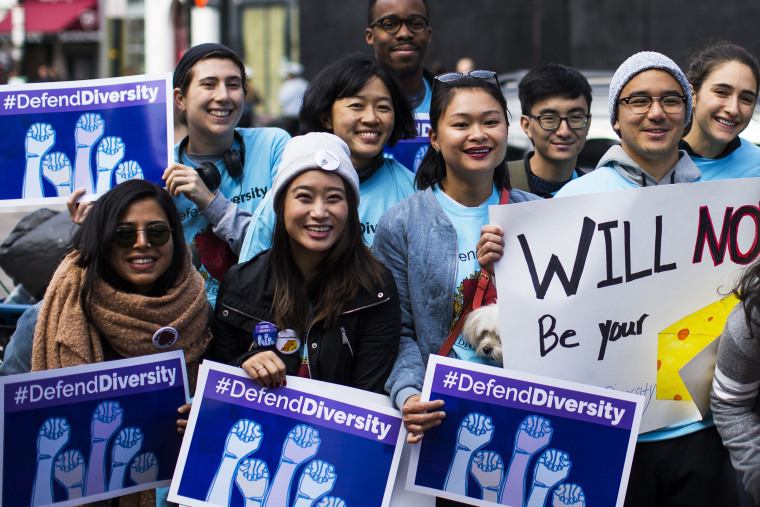
Digital organizing on sticky topics
In the latter half of the decade, the Asian American progressive movement became increasingly decentralized, shifting toward a more leaderless, youth-centered model of grassroots digital organizing.
The internet spotlighted racism against Asian Americans, helping to galvanize the community to speak out. From comedians' offensive jokes to Jesse Watters' notorious Chinatown segment to cellphone video of everyday racist incidents, Asian Americans grappled with both casual and overt racism. Viral moments allowed the community to point out that "model minority" stereotypes have traditionally made racism against Asian Americans invisible, while they also provided opportunities to speak out against them.
The internet also allowed for new conversations on mental health. Research reporting that Asian Americans are three times less likely than the white population to seek mental health help made the rounds on the internet around the middle of the decade, opening up a uniquely Asian American conversation on trauma, shame and seeking help.
Online discourse also elevated a more diverse array of Asian American voices, enabling a more nuanced consideration of Asian American identity that included the intersections of class, ethnicity, gender, sexuality and religion.
With the decade's rise of the #MeToo Movement, Asian American women — such as tech executive Ellen Pao and her gender bias lawsuit against a former employer, Chanel Miller and her sexual assault by Stanford University swimmer Brock Turner, and Rowena Chiu and her allegation of sexual assault against Harvey Weinstein — also played pivotal roles in drawing awareness to the need to end sexual harassment rape culture, particularly with regard to how racial identity influences how people perceive and respond to gendered violence.
Tanzila Ahmed, co-host of the "#GoodMuslimBadMuslim" podcast and campaign strategist for 18MillionRising, an Asian American digital activist group, described the shift as pivotal.
"Moving online allowed for a conversation on Asian American identity to happen at a quicker pace," said Ahmed, who cited the rise of Asian Americans' use of YouTube and podcasts as particularly valuable in democratizing online conversations about Asian American identity.
"Podcasts have enabled an interracial and interreligious conversation on Asian American identity that is easier to have online than in person," she says. "Listeners feel like they are eavesdropping on a conversation they haven't been able to have before in our community."
Ahmed cautions, however, that digital conversations are still balkanized.
"Segments of our community still aren't able to access the internet or are having their conversations in non-English-dominant spaces like WeChat," she says.
Moving toward alternative media
Reacting to their frustration at their continued absence from conventional media, young Asian Americans spent the early part of the 21st century venturing into digital spaces to start new forms of Asian American media. Several launched self-published identity-focused blogs, including Angry Asian Man, 8Asians, Sepia Mutiny and Reappropriate (founded by this author).
Such blogs became fixtures of online Asian American media, functioning both as autobiographical diaries and as community bulletin boards. They also filled the gap left by traditional news media and evolved into an informal network of alternative Asian American media.
Early Asian American blogs helped make the case to include more Asian American stories in conventional journalistic coverage. Over the last decade, several outlets, such as The New York Times and NPR, responded with a focus on hiring Asian American journalists and essayists — some of whom began their careers as writers for online Asian American outlets — to write specifically about race, identity and current events. Some outlets even launched dedicated Asian American verticals, such as HuffPost Asian Voices and NBC Asian America. (The current NBC Asian American team formerly launched HuffPost Asian Voices.)
Those early efforts paved the way for an explosion in the number of Asian Americans who experimented in the last decade with online genres — including podcasts, web comics, YouTube videos and vlogs — to tell Asian American stories outside mainstream spaces. These projects established a thriving alternative Asian American media space, complete with its own cultural trends and celebrity it-culture.
A conservative movement takes shape
Ramakrishnan has documented another phenomenon in the past decade: the rise of an influential grassroots conservative Asian American movement that has, along with that of online progressives, come to dominate the Asian American political landscape.
Ramakrishnan says the movement, which caught many analysts who follow Asian American politics by surprise, has focused on ending race-conscious affirmative action and preventing the collection of ethnically disaggregated demographic data, among other issues. As with the Asian American progressive movement, the nascent conservative movement quickly moved online. Progressive Asian Americans have fought back with their own barrage of op-ed articles, social media campaigns, petitions and amicus briefs to defend college access for traditionally underrepresented minority groups.
A demand to be seen on screen
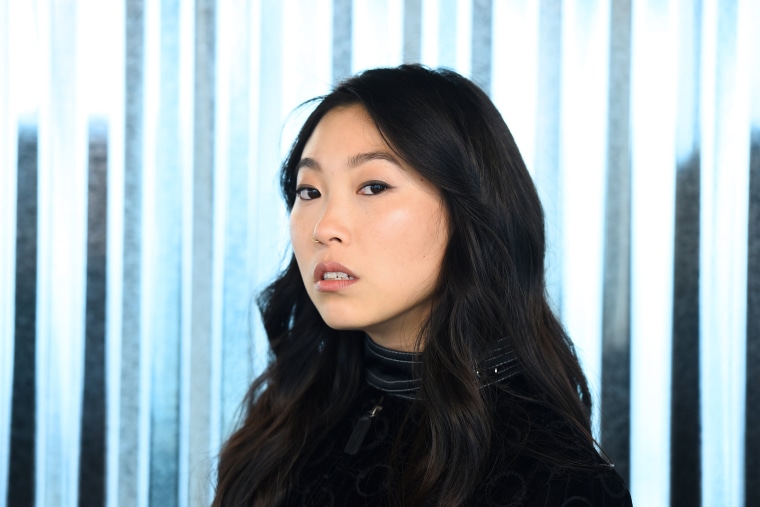
One issue that galvanized Asian Americans online — seemingly regardless of progressive or conservative leanings — was the historic underrepresentation of Asian Americans in Hollywood. In blog posts, op-ed articles, memes and viral social media campaigns, such as 2016's viral #whitewashedOUT hashtag and the #StarringJohnCho project, Asian Americans drew attention to the lack of Asian American actors in leading roles in American films. Nancy Wang Yuen, a sociologist who is the author of "Reel Inequality: Hollywood Actors and Racism," credits the unrelenting campaigns with mainstreaming a conversation about yellowface and whitewashing, which she sees as having fundamentally changed the media landscape for Asian Americans.
Yuen cites the actor Ed Skrein's decision to leave "Hellboy" in the wake of whitewashing criticisms on social media, allowing Asian American actor Daniel Dae Kim to be cast in his place.
"We're using satire to push back on pop culture infractions like whitewashing that have otherwise been a mainstay for the underrepresentation of Asians in Hollywood and which have led to our media erasure," Yuen says.
Studio investments in Asian American stories
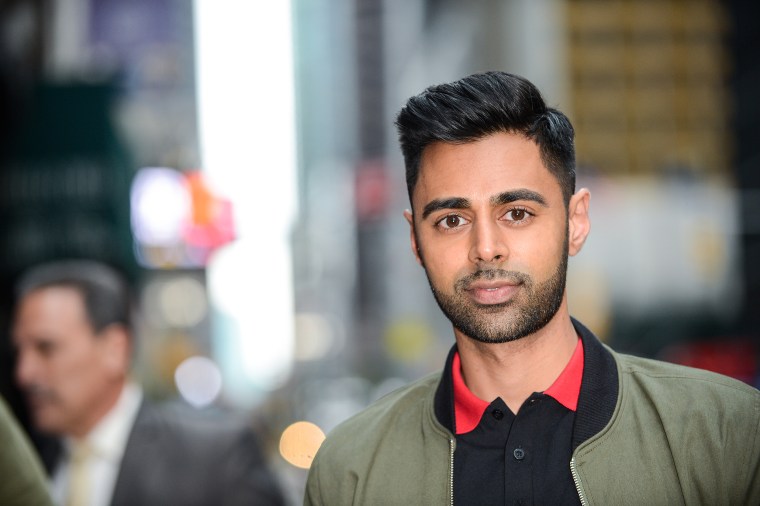
As Asian Americans worked online and offline to signal their growing influence as a media audience, major studios responded with new willingness to invest in Asian American-helmed projects.
The decade opened with the comedians Mindy Kaling and Aziz Ansari being invited to star in their own shows, a largely unprecedented decision at the time.
By the midpoint of the decade, ABC had greenlighted "Fresh Off the Boat," the first sitcom in 20 years to star an all-Asian American cast.Now in its sixth and final season, it has become the longest-running broadcast television show to center on an Asian American cast in history and made the lead actors, Constance Wu and Randall Park, household names.
By 2018, Wu was leading a star-studded cast of Asian American actors in "Crazy Rich Asians," which became the highest-grossing romantic comedy of the decade. The hype around the movie raised awareness of the lack of Asian stories and was applauded for its potential to open doors to other films.
In the wake of such successes, as well as the undeniable strength of Asian American alternative media online, Asian Americans are increasingly penetrating mainstream film and television to tell Asian American stories that cater to the Asian American audience.
Park recently starred opposite the comedian and screenwriter Ali Wong in the romantic comedy "Always Be My Maybe," which was punctuated with Asian American in-jokes and went on to become one of Netflix's most-viewed original feature films. The comedian Hasan Minhaj stars in the popular and unabashedly Asian American-focused comedy current events show "Patriot Act." And this year, Awkwafina starred in the critically acclaimed "The Farewell," a feature-length drama of familial love and loss, told through an inarguably Asian American lens.
Yuen says many of the Asian American actors involved in such projects have used their influence to advocate behind the camera, creating more opportunities for Asian American media and demanding pay equity for actors of color.
"We're just on the cusp of making it," Yuen says. Citing her own studies, she notes that Asian Americans have gone from being underrepresented in media in 2005 to close to parity in 2015.
"There's still tokenization and segregation of Asian Americans towards certain types of shows," she says. "We're still at risk for underrepresentation, but the fact that currently our numbers in Hollywood approximate our community's size in America is a huge step."
Anything but monolithic
The 2010s were a decade that redefined Asian America. Ten years ago, model-minority stereotypes typecast Asian Americans as dispassionate, politically disengaged newcomers, largely irrelevant in the larger American political and cultural landscape.
Now, a decade of highly visible grassroots organizing has challenged that misunderstanding and has, instead, presented Asian Americans as impassioned, motivated and angry — sometimes even at one another. It's clearer than ever that there is more than one way to think as an Asian American.
Ramakrishnan worries, however, that Asian Americans are on a precipice when it comes to grassroots organizing and that it will be incumbent on them in the next decade to redirect online organizing toward new goals.
"This decade has seen major improvements in Asian American representation in entertainment," Ramakrishnan says. "But one of the key challenges moving forward is to figure out how we keep the next generation centrally involved in many of the other important issues of our time."
Xu also wonders whether the grassroots energy is sustainable — "The key question remains as we look into the next decade: How do we continue to build on this momentum?"
